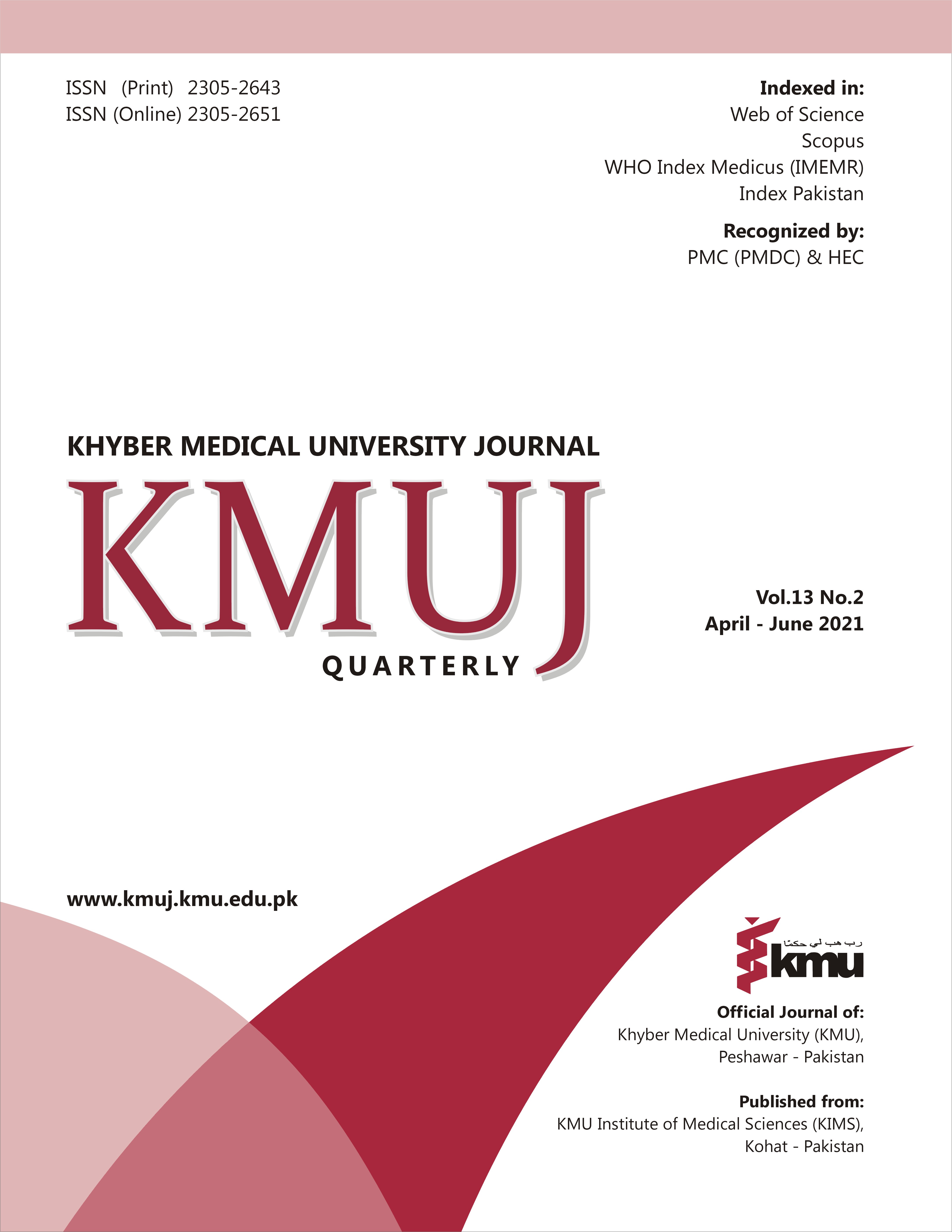PRIORITIZATION OF FACTORS BY MEDICAL FACULTY TOWARDS INTRODUCTION OF CENTRALIZED OBJECTIVE STRUCTURED CLINICAL AND PRACTICAL EXAMINATION
Main Article Content
Abstract
OBJECTIVES: To prioritize the factors required for the implementation of the centralized Objective Structured Clinical and Practical Examination (OSCE/OSPE) to standardize the clinical examination across the province.
METHODS: This was a cross-sectional survey that included four medical colleges of Peshawar; two public and two private. All study participants were practically involved in making and executing OSCE/OSPE. A 20-item survey questionnaire (having 5 points Likert scale responses) was developed based on the protocol given in AMEE guide-87. All the validation steps, including pilot testing, were followed. Responses were analyzed using SPSS-22.
RESULTS: Frequency and percentages for each item were analyzed based on priority. The factors which were highly prioritized are given in descending order of frequency as; central administration and management (65%), adequate human resource (64%), recruitment of examiners by the implementing body (61%), development of central OSCE/OSPE bank (60%), trained staff (57%), trained standardized patients (53%), the consensus for appropriate marking (50%), coordinated meetings before the start of assessment (47%), CCTV surveillance (26%), equipment provision by the examining body (21%), single venue for OSCE/OSPE conduction (19%), and traveling of students to the desired locations (10%).
CONCLUSION: The survey revealed that the central administrative body, training of faculty and staff, development of central OSCE/OSPE bank, and provision of equipment are integral to the implementation of centralized OSCE/OSPE.
KEYWORDS: Medical faculty, assessment, Staff Development, patient simulations
Article Details
Work published in KMUJ is licensed under a
Creative Commons Attribution 4.0 License
Authors are permitted and encouraged to post their work online (e.g., in institutional repositories or on their website) prior to and during the submission process, as it can lead to productive exchanges, as well as earlier and greater citation of published work.
(e.g., in institutional repositories or on their website) prior to and during the submission process, as it can lead to productive exchanges, as well as earlier and greater citation of published work.
References
Eldarir S, Afefy N, Guard N, Affairs H. An Introduction of OSCE versus Traditional Method in Nursing Education: Faculty Capacity Building & Students' Perspectives. J Am Sci 2010;6(12):1002-13.
Jabeen F, Zia S, Riaz S. Objective structured practical examination (OSPE), as a tool for the assessment of practical skills of undergraduate medical students. J Univ Med Dent Coll 2016;7(2):1-6.
Munjal K, Bandi PK, Varma A, Nandedkar S. Assessment of medical students by OSPE method in pathology. Internet J Med Update 2012;7(1):2-7.
Troncon LE. Clinical skills assessment: limitations to the introduction of an" OSCE"(Objective Structured Clinical Examination) in a traditional Brazilian medical school. Sao Paulo Med J 2004;122(1):12-7. https://doi.org/10.1590/S1516-31802004000100004
Khan KZ, Gaunt K, Ramachandran S, Pushkar P. The Objective Structured Clinical Examination (OSCE): AMEE Guide No. 81. Part II: Organization & Administration. Med Teach 2013;35(9):142-59. https://doi.org/10.3109/0142159X.2013.818634
Omigbodun AO. Quality assurance in medical education: The Nigerian context. Niger Med J 2010;51(2):70-7.
Hawkins RE. The introduction of clinical skills assessment into the United States medical li-censing examination (USMLE): A description of USMLE Step 2 Clinical Skills (CS). J Med Regul 2005;91(3):22-5. https://doi.org/10.30770/2572-1852-91.3.22
Artino AR, Rochelle JSLA, Dezee KJ, Gehlbach H. Developing questionnaires for educational research: AMEE Guide No. 87. Med Teach 2014;36(6):463-74. https://doi.org/10.3109/0142159X.2014.889814
Mahmud Z. A discriminant analysis of perceived attitudes toward statistics and profile identi-fication of statistics learners. In Proceedings of the 2nd WSEAS International Conference on Mul-tivariate Analysis and its Application in Science and Engineering 2009:41-7.
Harden RM. Approaches to curriculum planning. Med Educ 1986;20(5):458-66. https://doi.org/10.1111/j.1365-2923.1986.tb01193.x
Wilby KJ, Diab M. Key challenges for implementing a Canadian-based objective structured clinical examination (OSCE) in a Middle Eastern context. Can Med Educ J 2016 Dec;7(3):e4-9.
Bdair IA, Abuzaineh HF, Burqan HM. Advantages and Disadvantages of the Objective Struc-tured Clinical Examination (OSCE) in Nursing Education: A Literature Review. Int J Trend Sci Res Dev 2019;3(2):270-4. https://doi.org/10.31142/ijtsrd20269
Rahayu GR, Suhoyo Y, Nurhidayah R, Hasdianda MA, Dewi SP, Chaniago Y, et al. Large-scale multi-site OSCEs for national competency examination of medical doctors in Indonesia. Med Teach 2016;38(8):801-7. https://doi.org/10.3109/0142159X.2015.1078890
Ben-david MF. AMEE GUIDE AMEE Guide No. 18: Standard setting in student assessment. Med Teach 2000;22(2):120-30. https://doi.org/10.1080/01421590078526
Lin CW, Clinciu DL, Swartz MH, Wu CC, Lien GS, Chan CY, et al. An integrative OSCE meth-odology for enhancing the traditional OSCE program at Taipei medical university hospital - A feasibility study. BMC Med Educ 2013;13:120. https://doi.org/10.1186/1472-6920-13-102
